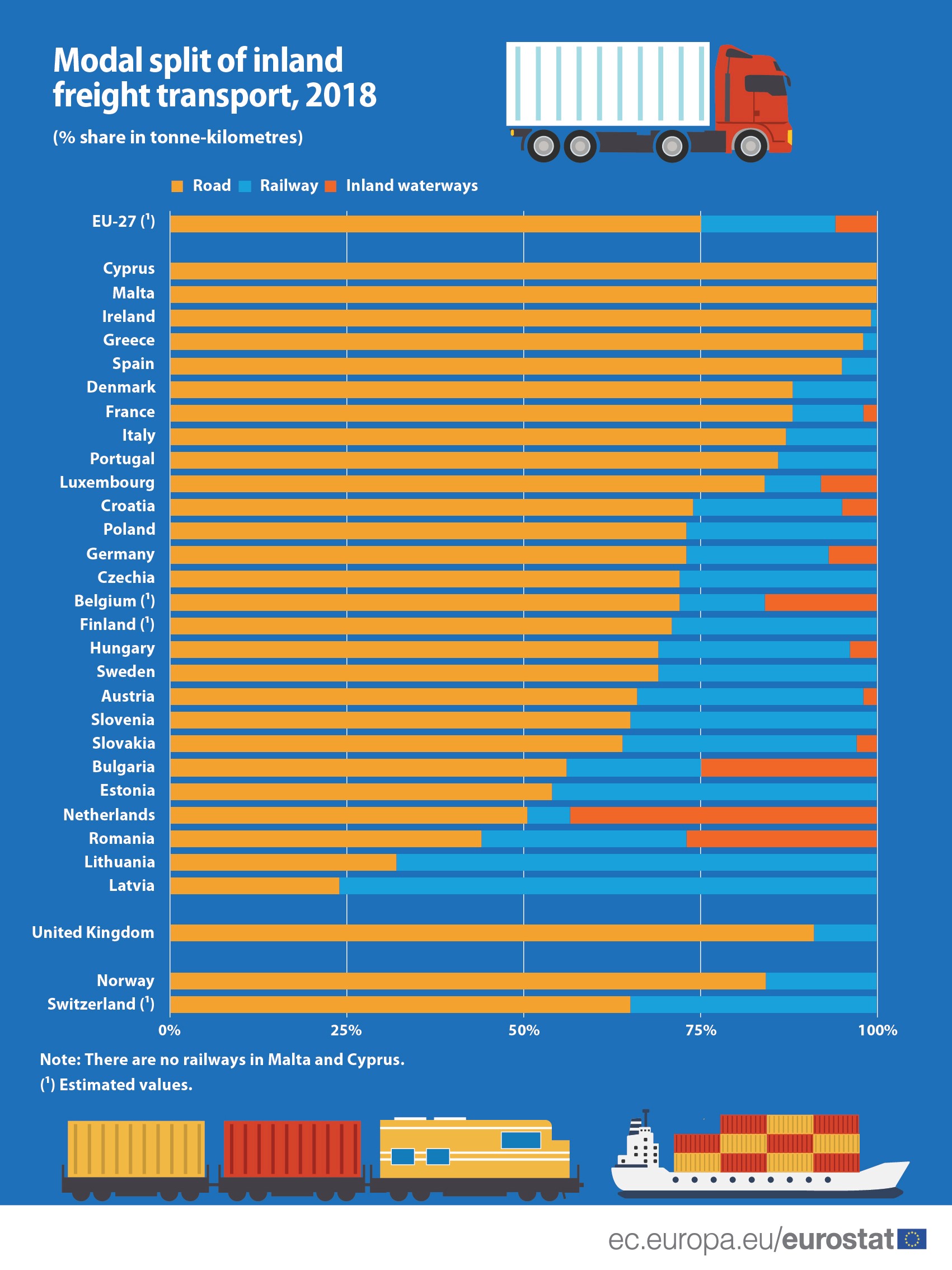In 2018, road transport accounted for three-quarters (75.3%) of the European Union’s (EU) inland freight transport. Rail and inland waterways transport accounted for 18.7% and 6.0% of inland freight transport respectively (based on tonne-kilometres).
The share of road transport has increased since 2013, when it was 73.9%.
Road main means of transport for freight except in Latvia and Lithuania
Road transport was the main mode of transport for inland freight in almost all EU Member States in 2018, and accounted for more than 70% of inland freight transport in 16 Member States.
The only exceptions were Latvia and Lithuania, where rail transport was the main inland transport mode, accounting for 75.8% and 67.9% of inland freight transport respectively. These were the highest shares of rail transport among the EU Member States. Only 32.1% of inland freight tonne-kilometres was performed by road in Lithuania, while in Latvia this mode of transport accounted for 24.2%.
In 2018, the Member States1 that recorded the largest shares of road transport were Ireland (99.2%), Greece (97.9%) and Spain (95.0%). The countries with the largest shares of inland waterways were the Netherlands (43.2%), Romania (27.1%) and Bulgaria (24.5%).
Source dataset: tran_hv_frmod
For more information, take a look at the Statistics Explained articles on Freight transport statistics - modal split and Freight transport statistics.
1 Cyprus and Malta have neither railways nor navigable inland waterways; thus, for these two Member States the share of road freight transport is 100 % by default.
Notes:
- The analysis refers only to inland freight transport; considerable amounts of freight may be transported by maritime freight services and, for some product groups by air transport or by pipelines.
- The European Union (EU) includes 27 EU Member States. The United Kingdom left the European Union on 31 January 2020. Further information is published here.
To contact us, please visit our User Support page.
For press queries, please contact our Media Support.


